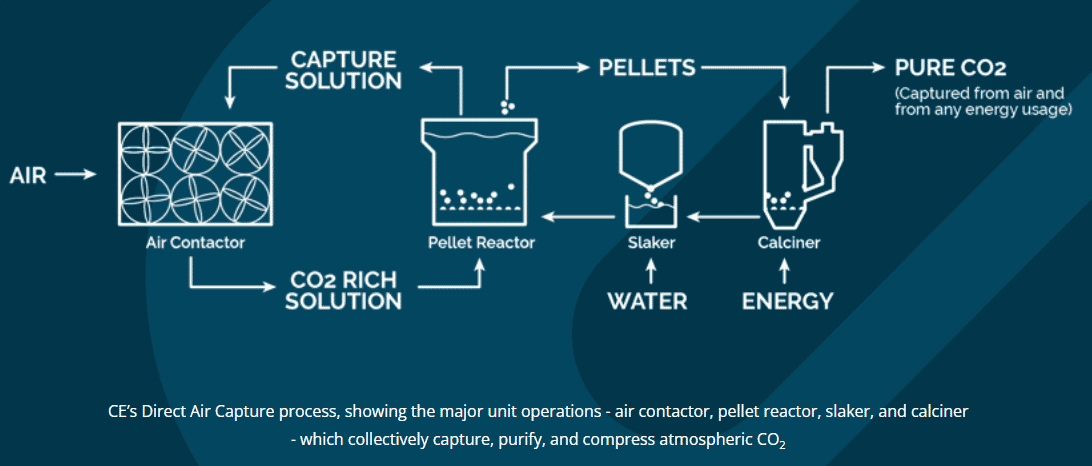Oil giant Occidental Petroleum (OXY) and Carbon Engineering (CE) are constructing the world’s largest direct air carbon capture (DAC) plant in the United States’ Permian basin.
Carbon Engineering focuses on the global deployment of megaton-scale DAC technology. The company has been working on capturing CO2 from the air since 2015.
According to Occidental Petroleum CEO Vicki Hollub, their plant will capture up to 500,000 tons of CO2 each year. This plant will be 120x bigger than the other largest DAC facility called Mammoth.
The Swiss startup Climeworks AG runs Mammoth in Iceland. The facility, once finished, will remove around 36,000 tons of CO2 per year. That corresponds to only 0.0001% of the 36 billion tons of CO2 emitted by humans each year.
Largest Carbon Capture Plant & Net Zero
Occidental Petroleum has already made commitments to reach net zero by 2050. In particular, it seeks to negate emissions from customers who burn the oil and gas extracts, also called Scope 3 emissions. This emission makes up as much as 80% of the firm’s total emissions.
But most of the company’s rivals in the U.S. don’t include customer emissions in their climate goals.
In an interview on a recent podcast, OXY’s CEO revealed their plan to focus more on carbon capture and sequestration than exclusive fossil fuel extraction.
The firm realized that establishing the world’s largest carbon capture plant is one way to be part of the energy transition. That’s because using CO2 generated by human activities is a way that Occidental can continue with its incremental oil production.
The Direct Air Capture plant will rely on carbon capture tech to suck in emissions directly from industrial sources or from the air that will be injected underground.
Here’s how the Direct Air Capture process works:

- However, the supply of carbon removal offsets is more limited than the offsets from carbon avoidance projects such as forestry and renewable energy.
The plant will provide cost-effective solutions that hard-to-decarbonize industries can use like offsets and their own emissions reduction programs to help achieve net zero.
Captured CO2 can be safely sequestered deep underground in saline formations. It is also useful in producing hydrocarbons for low-carbon fuels and in products like chemicals and building materials.
OXY and Net Zero Oil
The largest carbon capture plant is also looking forward to the revenue from “net zero oil” it aims to produce. This oil is produced through the process called Enhanced Oil Recovery (EOR) which extracts more oil from reservoirs than other methods.
Net zero oil with EOR means injecting more captured CO2 into oil reservoirs than what’s released during the extraction and burning of the oil.
Currently, Occidental Petroleum is using CO2 emitted by underground mines and not the CO2 removed from the air or direct emissions from industrial plants.
If OXY reaches net zero by 2050, the company aims to have revenue from carbon capture equal to that from Enhanced Oil Recovery.
The ground-breaking ceremony for the world’s largest carbon capture plant is set for November 29, with commercial operations to begin at the end of 2024.


